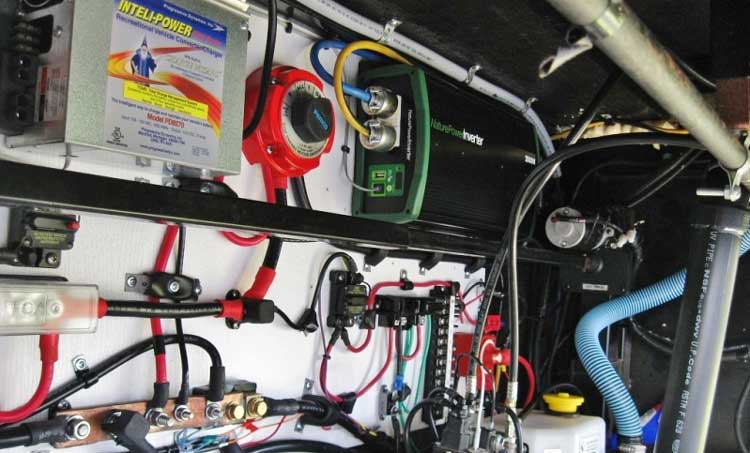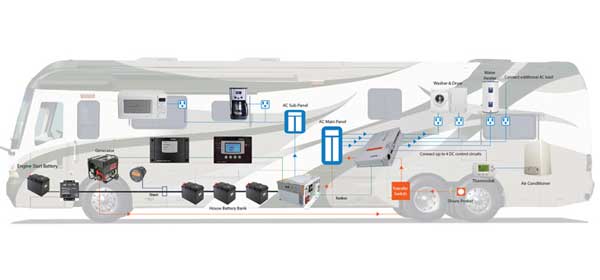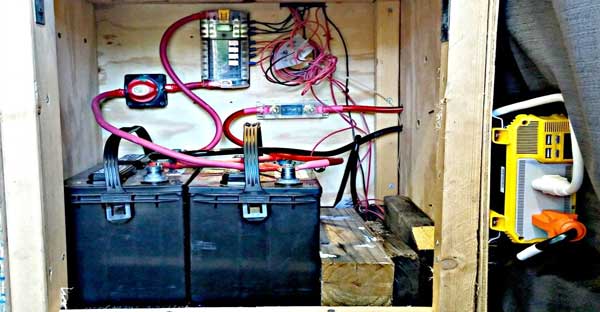
Your RV serves as your home when you decide to enjoy the journey on the road. With that in mind, it’s no longer surprising if it contains most of the modern conveniences and facilities that you were accustomed to, including electrical devices and appliances.
If you’re planning to ride your RV regularly or live in it most of the time then having at least a basic understanding of how its electrical system works is essential. It is also essential to learn about whether or not you can plug a 30 amp to a 50 amp. This will sort of guarantee your safety while on the road.
What Should You Know About your RV’s Electrical System?
One thing you have to take note of when living in or riding your RV is that you will not have unlimited access to electrical power. That said, you need to have a basic understanding of how it works. An important concept to remember, in this case, is the overall power measured in watts.
It is a product of amps or current and voltage. It should be noted that you need to stay below the exact number of watts available to ensure the smooth running of your circuits. If you exceed the available wattage then there is a great possibility for the electrical circuit in your RV to trip.

Another important fact to keep in mind is that your vehicle comes with a 120-volt and a 12-volt electrical system. At least one battery powers up the 12-volt electrical system. It works by powering things, like the start-up of your water heater, fridge, furnace, and the majority of lights inside your RV.
A generator or an electrical hookup plug for RVs, on the other hand, powers up the 12-volt system. You can use it in powering those items that you use every day such as your television, kitchen appliances, and other electronics.
Also, take note that most recreational vehicles are equipped with a power cord that you can use to plug into the electrical pedestal that you can find at an RV campground. This refers to campgrounds that have available hookups. The cords are available in two basic amps – the 30 and the 50 amp.
While the 30-amp cord features three prongs, the 50-amp cord, on the other hand, comes with four. With that in mind, having a 50-amp hookup means that you will be able to use more electricity simultaneously compared to having a 30-amp hookup.
The 50-amp service, therefore, is capable of accommodating more loads than the 30-amp. Another thing that you have to take note of between the two is that the 30-amp outlet is equivalent to 3,600 watts. The 50-amp outlet, on the other hand, equals 12,000 watts.
Is it Possible to Plug a 30-amp to a 50-amp?
Now, let’s answer your question on whether or not you can plug a 30-amp to a 50-amp service or vice versa. If you wish to plug a 30-amp to a 50-amp in an RV campground but are worrying about possible damage then there is no need to fret as this is totally alright.
While the campground has a 50-amp rating, which shows you that it is the maximum amperage it can deliver, note that even if you plug a 30-amp to it, it will only deliver the specific amps drawn by your amp.

This means that since your RV can only draw 3o amps, it is alright for you to plug it in a 50 amp but take note it can only draw up to 30 amps, not more. If you are planning to plug the reverse, 50 amp to 30 amp then you may need an adapter. It is alright to plug your 50-amp cord to a 30-amp outlet provided there’s an adapter.
The problem is you may experience some limitations on the amount of electricity. This means that since you’re adapting a 30-amp, it would not be possible for you to consume as much electricity as when you plugged in at a 50-amp pedestal.
It is also crucial for you to use the shortest extension cords and adapter in this case to reduce the risk of experiencing a voltage drop.
Safety Tips to Keep in Mind
Before plugging in the electrical hookup of your recreational vehicle to a campground site, you have to do some precautionary measures to ensure your safety. While it is tempting to plug in right away and turn on all your appliances immediately right after pulling into a campground site, ensure that you are safe.
You have to guarantee your safety first considering the fact that you will be handling electricity. The first thing that you have to do is to use a polarity tester as a means of testing the hookup. This is necessary for figuring out whether the wiring in the campground is in excellent condition.
The polarity tester is also beneficial as it tells you right away if the wiring is not in its good condition. That way, you can prevent frying any part or component of your electrical system. The good thing about the polarity tester is that it is affordable. You can get it at less than $40.
Prior to plugging in, another safety precaution that you should take is to switch off everything. This should include the electrical pedestal and the electrical system of your RV. Switch them on only once you firmly plugged in the power cord.
It might also be beneficial for you to have a surge guard installed. The surge guard is also a great investment as it works in protecting the electrical system in your RV from potentially harmful surges.
Conclusion
Plugging a 30 amp to a 50 amp or vice versa is actually possible. However, you have to know exactly how your RV will function once you do it. Also, find out what specific appliances can and can’t run simultaneously. Such will let you know right away if plugging a 30 amp to a 50 amp or vice versa allows you to be comfortable in your RV.
Last update on 2023-05-06 at 08:29 / Affiliate links / Images from Amazon Product Advertising API
